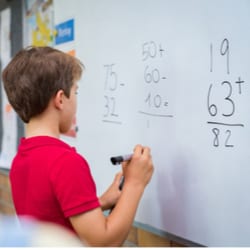Key elements of Collaborative learning
- Students work together to apply previously acquired knowledge
- Students cooperatively solve problems using previously acquired knowledge and skills
- Students work in groups that foster peer learning
- Groups of students compete against each other
Effective educators provide opportunities for learners to participate in flexible groups that collaborate on meaningful tasks, and respond to questions that support achievement of learning goals.
Who can I work with?
Numeracy learners are supported in their learning when they are able to apply, challenge and develop their
Working in a shared space is not collaborative group work. In the numeracy environment learners have defined responsibilities; they know what is expected of them and their role in the group, to achieve the learning outcome.
Ways of working together and the protocols for working in groups are explicitly taught and developed.
Working collaboratively allows learners to discuss and to be exposed to multiple solutions and
Educators use collaborative groups to support, promote and challenge learners and use formative assessment strategies to monitor and adapt the learning process.


